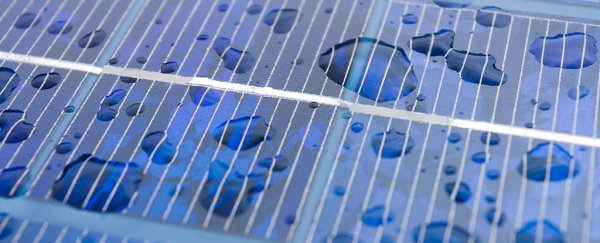Solar power is making huge strides as a reliable, renewable energy source, but there's still a lot of untapped potential in terms of the efficiency of photovoltaic cells and what happens at night and during inclement weather. Now a solution has been put forward in the form of producing energy from raindrops.
Key to the new process is graphene: a 'wonder' material we've heard plenty about before. Because raindrops are not made up of pure water, and contain various salts that split up into positive and negative ions, a team from the Ocean University of China in Qingdao thinks we can harness power via a simple chemical reaction. Specifically, they want to use graphene sheets to separate the positively charged ions in rain (including sodium, calcium, and ammonium) and in turn generate electricity.
Early tests, using slightly salty water to simulate rain, have been promising: the researchers were able to generate hundreds of microvolts and achieve a respectable 6.53 percent solar-to-electric conversion efficiency from their customised solar panel.
For the experiment, the team used an inexpensive, thin-film solar cell called a dye-sensitised solar cell. After adding a layer of graphene to the cell, it was put on a transparent backing of indium tin oxide and plastic. The resulting 'all-weather' solar cell concept was then equipped to produce power from both sunshine and the rain substitute.
What's happening here is that the positively charged ions are binding to the ultra-thin layer of graphene and forming a double layer (technically referred to as a pseudocapacitor) with the electrons already present. The potential energy difference between the two layers is strong enough to generate an electric current.
The experiment is still just in the 'proof of concept' phase, so there's work to be done, but the researchers hope their findings can "guide the design" of future all-weather solar cells and contribute to the growing influence of renewable energy.
They're now working on adjusting the technology to handle the variety of ions found in real raindrops and figuring how to generate enough electricity from the typically low concentrations they come in.
It's not the first time graphene has been used to boost solar energy technologies: earlier this year, a team from the UK was able to create a graphene-based material that's very effective at absorbing ambient heat and light, and which could eventually lead to solar panels that can work with the diffuse sunlight that finds its way indoors.
If these scientists get their way, in the future, photovoltaic cells may not be hampered by a lack of direct sunshine at all.
The study has been published in the journal Angewandte Chemie.
